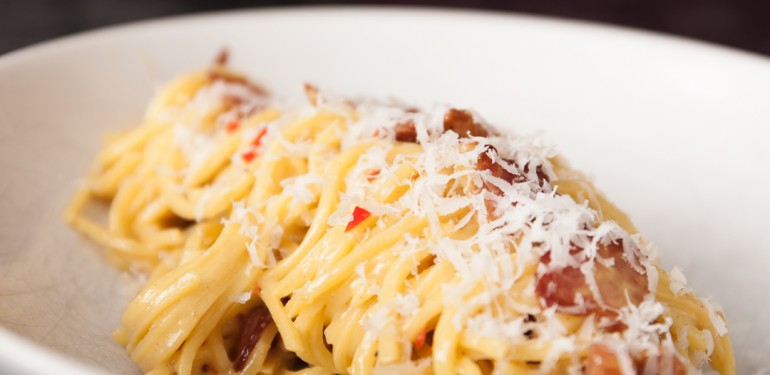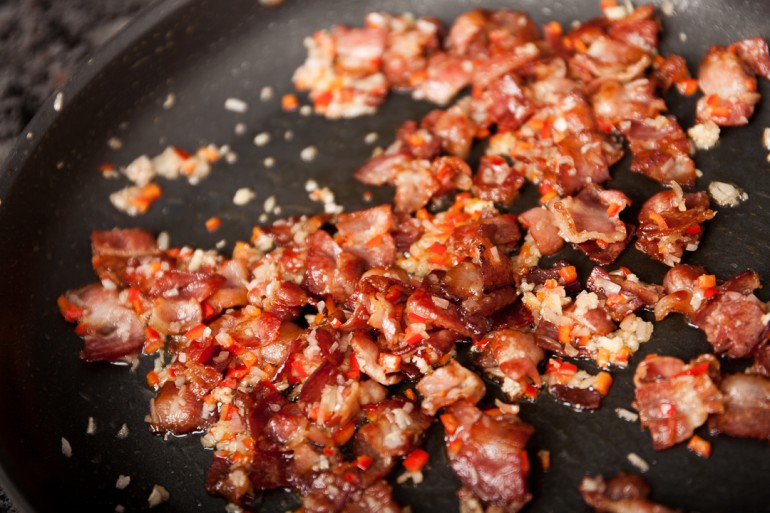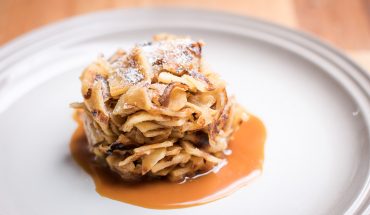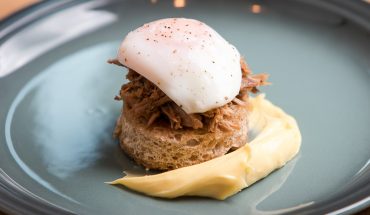Although not really that old, the history of the Spaghetti Carbonara is still not clear. Of course it’s Italian, but with that settled everything else gets a bit more muddled. The consensus seems to be that it was first served in mid-20th century Rome, where the Allied troops brought eggs and bacon through their supply chains. This was used to make the dried Italian pasta a little tastier in the tough post-war years.
The name carbonara means charcoal burner and alla carbonara “in the coal workers style”, but there’s no evidence at all that it was actually eaten by the charcoal-making Abruzzi woodcutters, as that story goes. There are also other Italian dishes similar to Carbonara, like the pasta cacio e uova from the souther parts of the country. But this is not the same thing.
What makes this version of the Carbonara stand out is the creamy sauce coating the pasta with the pockets of crunch and salt in the bacon and the black pepper, garlic and chili that provides balance for all the fat and richness. Parmigiano reggiano, onion and a little splash of white wine brings everything together and provides a good foundation for the dish.
This is not the way it’s made in Italy. Neither garlic, cream or chili is part of the standard Italian way of cooking Carbonara. The dish is loved in much of the Western world and adding these ingredients makes it even better. Universally important is that the eggs are not scrambled, that the sauce coats all of the pasta without becoming a stew and that the bacon are evenly distributed.
Preparation and time management is of the essence when cooking this dish. Let the pasta overcook and it will all be a mush, let the bacon and onion go dark and it will taste bitter. But, with all ingredients prepared the final cooking takes less than five minutes and it’s a very quick dish overall providing that primal satisfaction of mixing carbs and fat.
Spaghetti Carbonara
4 Servings (30 min to prepare and cook)
|
|





